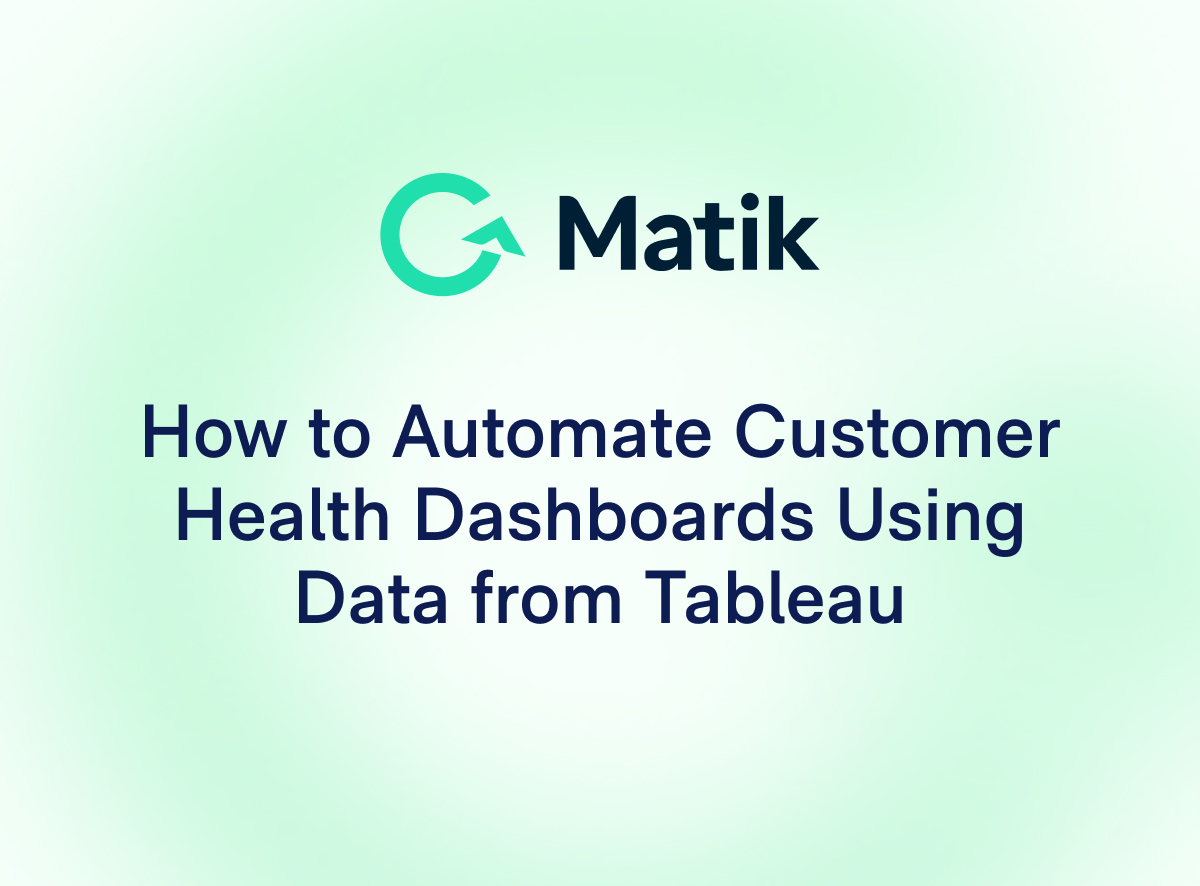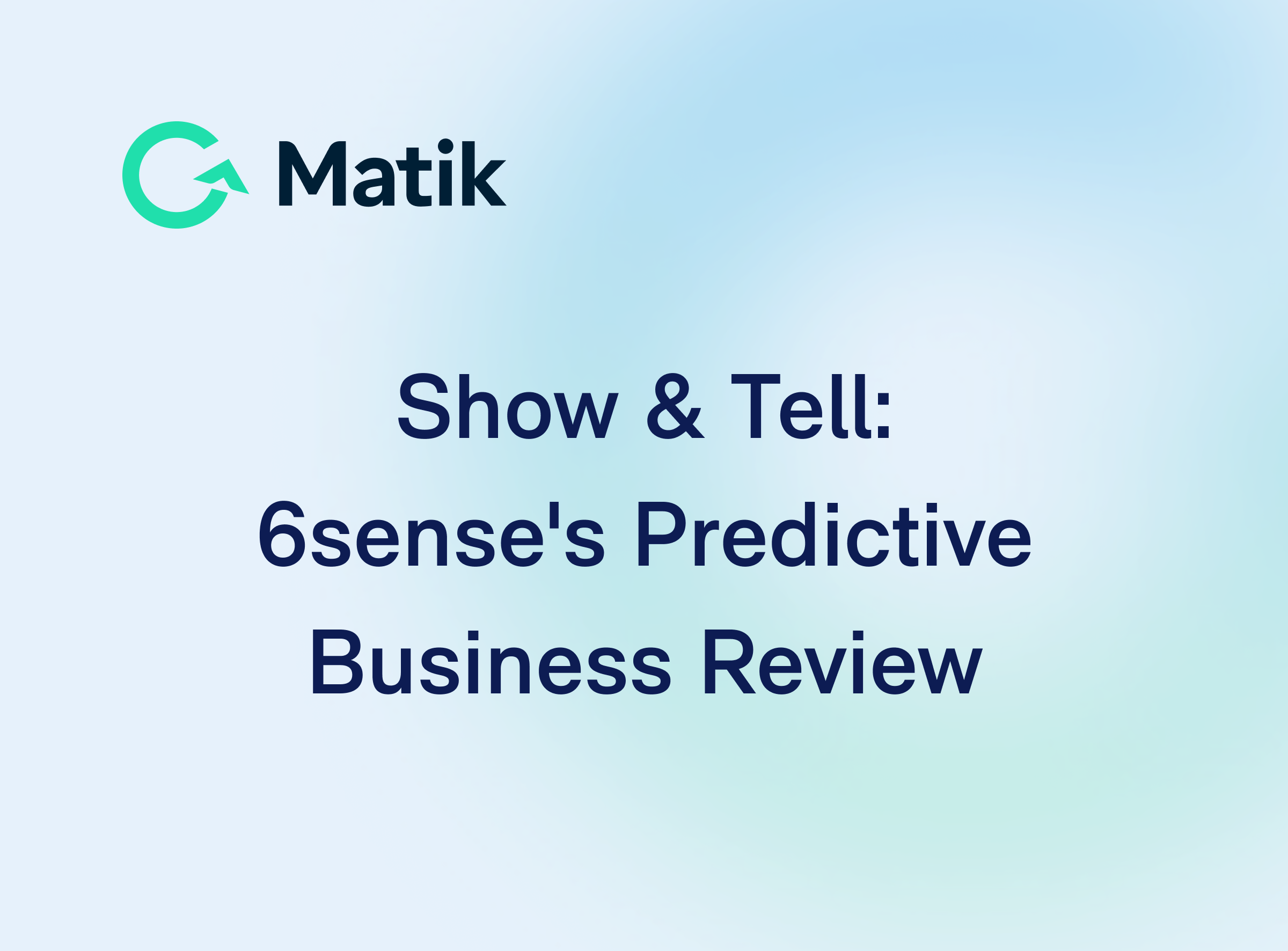Join Our Newsletter
Quarterly business reviews present important opportunities for CSMs to build trust with customers, but oftentimes it can be a challenge to make these meetings as successful as they can be. Sometimes QBRs are less than engaging and effective, not to mention time-consuming to prepare for on the CSM side. In order to improve the QBR process overall, it’s important to think from your customer’s perspective and share the data they care about most, while streamlining the process for internal teams.
Improving the QBR process can contribute to other benefits, including boosted retention, reduced churn rates, and greater customer trust. To work toward making QBRs better for everyone involved, keep an eye out for the common mistakes below.
Lack of proof
During a QBR, customers want to see proof that a product is helping them work toward their goals. Particularly in times of economic uncertainty, companies are constantly evaluating their tech stacks to determine which software is business-critical and which software can be eliminated. With this in mind, shorting your customers on the data they need is a huge QBR mistake.
To start, a CSM should realign on the customer’s goals to make sure everyone is on the same page. The QBR presentation should then include data that customers care about most at their specific point in the customer journey. For example, CSMs may choose to present account data during the onboarding phase, usage data during the adoption phase, and ROI data at renewal. By delivering this information strategically throughout the customer lifecycle, CSMs can develop a story that proves the value of their product.
Pro tip: Use Matik’s Hierarchy of Data to map out which data you should be sharing at different stages in the customer lifecycle.
Complexity
Of course, it’s important to present numerous data points during a QBR in order to prove the value of your product. However, it’s equally important to avoid sharing obscure data that forces the customer to come to their own conclusions. A QBR presentation (and really any piece of data-driven content) needs to be compelling, shareable, and concise. Consider using data visualizations like charts, tables, and graphs to make data more digestible.
To streamline the QBR process even further, make sure to stick to a clear agenda during the meeting, and make every effort to keep it collaborative, engaging, and conversational. By sticking to the most important information, your customers will more easily understand the value of your product and can therefore communicate that value with key stakeholders.
Failing to involve the right people
In order for your QBR message to resonate fully with your customer, key stakeholders need to have visibility into the data and overall process. Work with your account contacts to make sure the right individuals with influence over purchase decisions are involved in some way. Even if these parties don’t attend the meeting, make sure they have access to the data you’ve shared and follow up with them accordingly.
Inconsistency
A quarterly business review should, of course, happen every quarter. However, some teams struggle to keep up with this frequency for all of their customers. To ensure that your QBRs are as effective as possible, they need to be happening for every customer on a regular basis.
Another issue many CS teams face is a lack of standardization when it comes to QBRs. Slide decks may look entirely different from one customer to the next, and key information may be left out. While these presentations should look different from customer to customer to some extent, it’s helpful for CSMs to have a QBR template as a starting point. This ensures they don’t need to reinvent the wheel each time, keeps branding consistent, and ensures that customers are receiving a quality presentation at each touchpoint.
Lack of personalization
No two customers are the same, so each QBR should be custom tailored for their specific goals and stage in the customer lifecycle. Lack of personalization can result in missed opportunities, and in worst case scenarios, can lead to a lost customer. Ultimately, customers just want to feel heard—and proving that you understand the intricacies of their goals is a crucial step in that process.
With this in mind, savvy CSMs need to build out personalized, data-driven content for each touchpoint. By touching base frequently, staying on top of the customer’s goals and objectives, and personalizing insights based on a customer’s unique situation, CSMs can establish themselves as trusted advisors. And finally, remember: a QBR is about your customer, not your product. Stay focused on their needs and help them work toward solutions.
Next time, create your QBR the easy way—use Matik's Essential QBR Template to save time and utilize a detailed guide of what to include in your presentation.
---
See Matik in Action—Request a Demo















